Rebekah Taussig in Time Magazine:
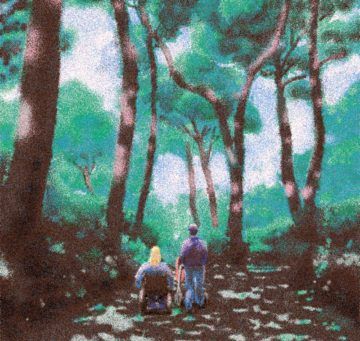 It was a night in mid-April that I fell asleep to the phrase this is too hard pinging through my brain, and they were the first words to cross my mind when I opened my eyes the next morning. I texted my sisters: “Remember the easy days when it was JUST a baby and cancer???” I pulled myself out of bed, plopped heavily into my wheelchair and stared in the mirror with my fingers splayed across my growing belly. That day we had to decide if my partner Micah would start a second round of chemotherapy treatments that would weaken his ability to fight against this new virus if he caught it, or forgo the treatment and change his odds against cancer. Our baby would arrive in a few weeks.
It was a night in mid-April that I fell asleep to the phrase this is too hard pinging through my brain, and they were the first words to cross my mind when I opened my eyes the next morning. I texted my sisters: “Remember the easy days when it was JUST a baby and cancer???” I pulled myself out of bed, plopped heavily into my wheelchair and stared in the mirror with my fingers splayed across my growing belly. That day we had to decide if my partner Micah would start a second round of chemotherapy treatments that would weaken his ability to fight against this new virus if he caught it, or forgo the treatment and change his odds against cancer. Our baby would arrive in a few weeks.
That spring, as my feet and belly swelled, my classes of high school students pivoted to virtual learning. I scrapped the original plans and assigned personal essays. “Let’s bear witness to the here and now,” I said. “One day, we might even read these essays to our grandchildren.” I wrote alongside them as we journaled every day, paying attention to the details—snippets of dialogue caught at the dinner tables we were now sitting around, the exact flavor of the cinnamon rolls we finally had time to bake, our bodies’ reactions to sitting in front of screens for eight-plus hours a day. Tiny flashes of human experience in the midst of a global pandemic.
As soon as we started drafting our notes into essays, though, the plump, specific moments we’d documented flattened under the task of shaping them, and I noticed many of us pulling in one of two directions. There were the essays that skimmed the surface of loss—I’m bored; I miss soccer practice; when will this be over? And there were the essays of relentless positivity—I’m finally getting to spend more time with my family; I’m learning to be grateful for what I have; I’ve had time to make so many cool crafts. The angsty drafts didn’t reach complete catharsis, the uplifting versions didn’t quite offer hope, and all of us struggled to stay present with our words.
I was no exception. As soon as I tried to weave meaning from the tidbits I’d been gathering, I watched my words splinter on the page.
More here.

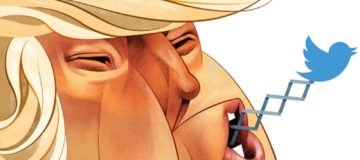 After Donald Trump lost the US presidency last year, he retained the consolation prize of his Twitter account. Commentators debated how Mr Trump would seek to profit from the 88 million followers he had accumulated: a new TV career or another presidential bid? Yet on 8 January, he lost his cherished platform after he was permanently suspended by Twitter because of “the risk of further incitement of violence”. Two days earlier a rabble of Trump fanatics, conspiracy theorists and white supremacists had stormed the US Capitol, resulting in five deaths. In a video posted on Twitter, Mr Trump told the mob, “We love you” and later tweeted: “These are the things and events that happen when a sacred landslide victory is so viciously & unceremoniously stripped away from great patriots who have been badly & unfairly treated for so long.”
After Donald Trump lost the US presidency last year, he retained the consolation prize of his Twitter account. Commentators debated how Mr Trump would seek to profit from the 88 million followers he had accumulated: a new TV career or another presidential bid? Yet on 8 January, he lost his cherished platform after he was permanently suspended by Twitter because of “the risk of further incitement of violence”. Two days earlier a rabble of Trump fanatics, conspiracy theorists and white supremacists had stormed the US Capitol, resulting in five deaths. In a video posted on Twitter, Mr Trump told the mob, “We love you” and later tweeted: “These are the things and events that happen when a sacred landslide victory is so viciously & unceremoniously stripped away from great patriots who have been badly & unfairly treated for so long.” So much has been written on the Heide group of artists, Nolan, Tucker, Hester, and their patrons John and Sunday Reed that it is hard to imagine anything more could be added. π.ο.’s Heide however, though holding this group of communalism, camaraderie, and free love as its centre, radiates backwards to the history that precedes the Reeds’ utopian endeavour, and continues into its aftermath. One epigraph from Oscar Wilde signals Heide’s intent: ‘The only duty we have to history is to rewrite it.’ Artists tumble out in artistic lineage from Buvelot to the Heidelberg School to Heide, along with numerous glancing biographies of influential patrons and politicians, William Barak, Ned Kelly, Albert Namatjira, Patrick White, Billy Hyde, Eliza Fraser, and many others. Through these intersecting histories, Heide also depicts the struggle between the conservation of the past and revolt against it, as epitomised in the Ern Malley hoax, with Angry Penguins magazine briefly funded by the Reeds, and the recurring compromises that swing between capital and art; ‘Only an Artist, can break out of / a straight-jacket.’. But it is his poetic technique that most energetically enacts these struggles, forging a dense amalgam in which past and present continually invade each other. Where π.ο.’s earlier Fitzroy: The Biography catalogued portraits of famous, notorious, and lesser known characters, Heide commences with ‘Terra Australis’ that cryptically lampoons its title, then to Cook’s voyage, and gradually progresses to the establishment of the State Library and the National Gallery of Victoria in 1850s colonial Melbourne, and eventually to the artists hammering to enter or exit those institutions. Escapee William Buckley and explorers Leichhardt and Burke and Wills are also among these seekers of the new: ‘On the horizon: / 23 horses, 19 men, and 26 camels on / a slow walk across / a blank slate.’ This imaginary ‘blank slate’ is equivalent to the unpolished metropolis without its establishments of arts and learning, and these doomed or heralded figures parallel the relentless pursuit of art.
So much has been written on the Heide group of artists, Nolan, Tucker, Hester, and their patrons John and Sunday Reed that it is hard to imagine anything more could be added. π.ο.’s Heide however, though holding this group of communalism, camaraderie, and free love as its centre, radiates backwards to the history that precedes the Reeds’ utopian endeavour, and continues into its aftermath. One epigraph from Oscar Wilde signals Heide’s intent: ‘The only duty we have to history is to rewrite it.’ Artists tumble out in artistic lineage from Buvelot to the Heidelberg School to Heide, along with numerous glancing biographies of influential patrons and politicians, William Barak, Ned Kelly, Albert Namatjira, Patrick White, Billy Hyde, Eliza Fraser, and many others. Through these intersecting histories, Heide also depicts the struggle between the conservation of the past and revolt against it, as epitomised in the Ern Malley hoax, with Angry Penguins magazine briefly funded by the Reeds, and the recurring compromises that swing between capital and art; ‘Only an Artist, can break out of / a straight-jacket.’. But it is his poetic technique that most energetically enacts these struggles, forging a dense amalgam in which past and present continually invade each other. Where π.ο.’s earlier Fitzroy: The Biography catalogued portraits of famous, notorious, and lesser known characters, Heide commences with ‘Terra Australis’ that cryptically lampoons its title, then to Cook’s voyage, and gradually progresses to the establishment of the State Library and the National Gallery of Victoria in 1850s colonial Melbourne, and eventually to the artists hammering to enter or exit those institutions. Escapee William Buckley and explorers Leichhardt and Burke and Wills are also among these seekers of the new: ‘On the horizon: / 23 horses, 19 men, and 26 camels on / a slow walk across / a blank slate.’ This imaginary ‘blank slate’ is equivalent to the unpolished metropolis without its establishments of arts and learning, and these doomed or heralded figures parallel the relentless pursuit of art. The plaques and firsts are the least interesting part of her story, though. Above all, Butler was an observer and ponderer. The probing mind that animates her novels, short stories and essays is obsessed with the viability of the human enterprise. Will we survive our worst habits? Will we change? Do we want to?
The plaques and firsts are the least interesting part of her story, though. Above all, Butler was an observer and ponderer. The probing mind that animates her novels, short stories and essays is obsessed with the viability of the human enterprise. Will we survive our worst habits? Will we change? Do we want to?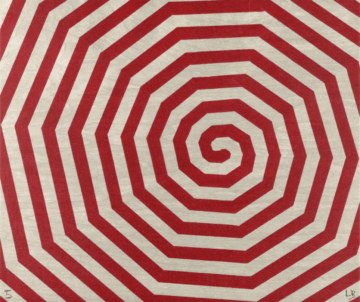 Yakov Feygin in Phenomenal World:
Yakov Feygin in Phenomenal World: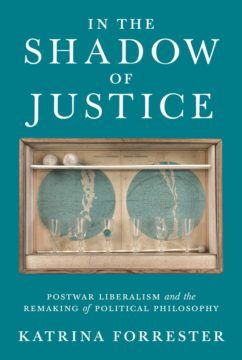 Florence Sutcliffe-Braithwaite interviews Katrina Forrester over at Renewal:
Florence Sutcliffe-Braithwaite interviews Katrina Forrester over at Renewal: Houman Barekat in LA Review of Books:
Houman Barekat in LA Review of Books: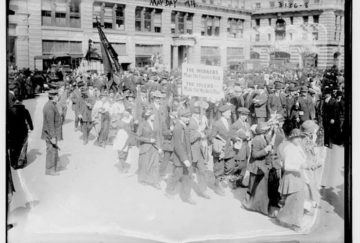 Mike Konczal in Boston Review:
Mike Konczal in Boston Review: Like school, work conferences and visiting your grandparents, this year’s
Like school, work conferences and visiting your grandparents, this year’s 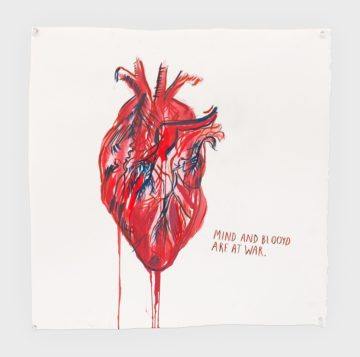 Even if, especially if, Trump leaves—and some portion of us are lulled into mistaking his ascendency for an aberration—we’ll have to choose to look at hate, even as the press swells with self-congratulatory stories of a nation rejecting “division.” Because the hate of which Trump is the coalescence, the coagulation, was not an aberration, it was an inevitability.
Even if, especially if, Trump leaves—and some portion of us are lulled into mistaking his ascendency for an aberration—we’ll have to choose to look at hate, even as the press swells with self-congratulatory stories of a nation rejecting “division.” Because the hate of which Trump is the coalescence, the coagulation, was not an aberration, it was an inevitability.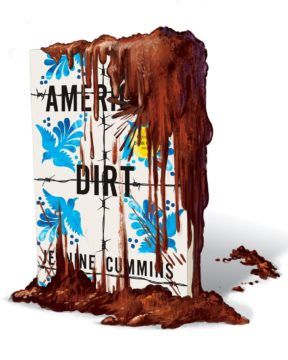 On a mild Monday this past February, a tense meeting unfolded in a skyscraper in downtown Manhattan. Four Latinx writers and activists sat on one side of a long conference table. Facing them was a collection of white editors and executives from Macmillan, the publishing house that had recently put out
On a mild Monday this past February, a tense meeting unfolded in a skyscraper in downtown Manhattan. Four Latinx writers and activists sat on one side of a long conference table. Facing them was a collection of white editors and executives from Macmillan, the publishing house that had recently put out 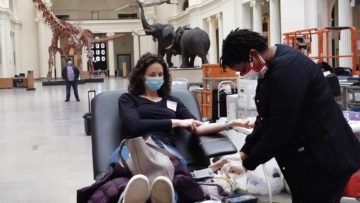
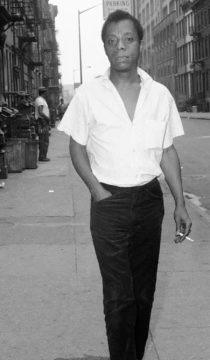 Michael Ondaatje once wrote that if Van Gogh was “our 19th-century artist-saint” then James Baldwin was “our 20th-century one”. For many, Baldwin’s writing has long been a touchstone of anti-racist humanism, but the sense of that particular epithet has never landed more emphatically for me than while reading Eddie S Glaude Jr’s Begin Again, his potent meditation on the enduring legacy of Baldwin’s life and thought, a New York Times bestseller and one of a number of titles that have spoken to the soul of public outrage at
Michael Ondaatje once wrote that if Van Gogh was “our 19th-century artist-saint” then James Baldwin was “our 20th-century one”. For many, Baldwin’s writing has long been a touchstone of anti-racist humanism, but the sense of that particular epithet has never landed more emphatically for me than while reading Eddie S Glaude Jr’s Begin Again, his potent meditation on the enduring legacy of Baldwin’s life and thought, a New York Times bestseller and one of a number of titles that have spoken to the soul of public outrage at  An old man with a shaggy white beard and matching hair stands in front of an audience of seekers and flower children. They are looking for ways of amplifying their human potential, of becoming more aware of their sense perceptions. It’s the tail end of the 1960s and the Esalen Institute in Big Sur, California, is where it’s happening.
An old man with a shaggy white beard and matching hair stands in front of an audience of seekers and flower children. They are looking for ways of amplifying their human potential, of becoming more aware of their sense perceptions. It’s the tail end of the 1960s and the Esalen Institute in Big Sur, California, is where it’s happening.  On Jan. 1, 2021, five long years after the vote for what’s become known as
On Jan. 1, 2021, five long years after the vote for what’s become known as